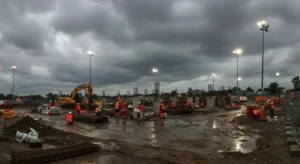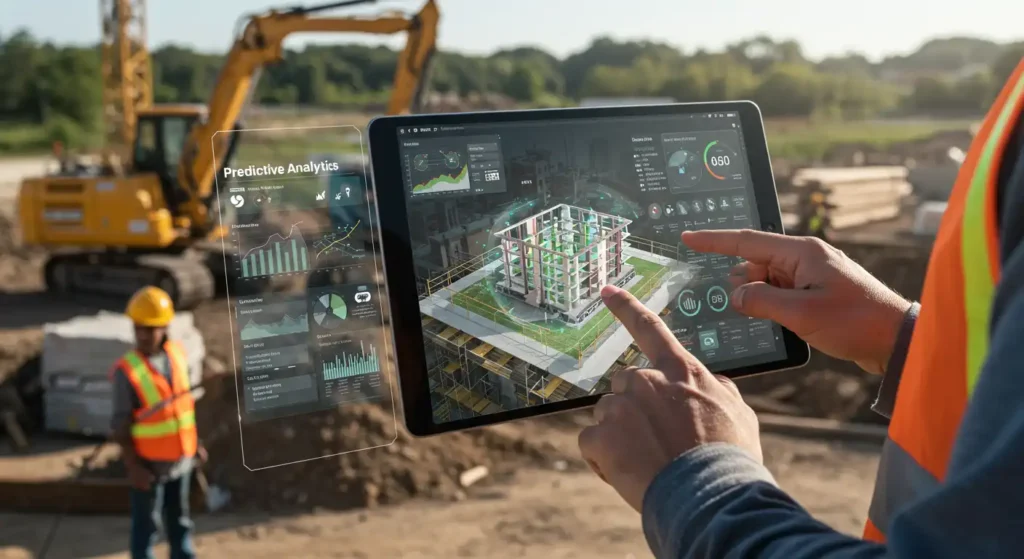1. What Is Predictive Analytics in Restoration?
Predictive analytics is the science of using past and present data to forecast future outcomes. In the context of restoration, it involves combining information from inspections, weather data, historical claims, moisture sensors, and even drone or thermal imaging. Algorithms then analyze the data to detect hidden risks and project likely scenarios.
For example, predictive analytics may identify a high chance of mold growth in a section of drywall weeks before it becomes visible. By addressing the issue early, restoration teams can prevent more extensive and costly damage.
2. How Predictive Analytics Works in Practice
The process typically involves several key steps:
- Data Collection: Gathering inputs from building inspections, IoT sensors, climate models, and past restoration projects.
- Data Processing: Cleaning and organizing information into formats that AI models can use effectively.
- Pattern Recognition: Using algorithms to identify subtle signals such as moisture trends, discoloration, or stress in structures.
- Forecasting: Generating predictions about what is most likely to fail, degrade, or spread damage.
- Decision Support: Helping restoration teams prioritize repairs, allocate resources, and communicate risk transparently to clients.
3. Why Predictive Analytics Matters in Restoration
Traditional restoration is reactive: fix what you see. Predictive analytics shifts the model to proactive and preventive, which delivers multiple advantages:

- Earlier Detection: Find hidden water damage or fire risk zones before they escalate.
- Cost Efficiency: Prevent small issues from turning into full structural overhauls.
- Time Savings: Streamline inspections and focus on the highest-risk areas.
- Transparency: Provide clients with data-driven explanations and risk maps.
- Resilience: Enhance a building’s ability to withstand future environmental stress.
4. Examples of Predictive Analytics in Action
Across the construction and restoration industries, predictive analytics is already being applied in groundbreaking ways:
- Water Damage Assessment: Moisture sensors embedded in walls transmit real-time humidity data. Algorithms predict mold hotspots and structural weakening before visible signs appear.
- Fire Risk Modeling: Predictive software integrates local climate, material composition, and electrical inspection reports to anticipate fire risks.
- Storm and Flood Resilience: Historical storm patterns combined with GIS mapping forecast how a property might be impacted in the next major weather event.
- Drone & Thermal Imaging: AI processes drone footage and infrared scans to flag hidden roof leaks, insulation failures, or energy loss.
5. The Role of Artificial Intelligence
Artificial intelligence (AI) enhances predictive analytics by analyzing massive datasets quickly and identifying relationships that humans may overlook. For restoration, AI-powered tools can:
- Scan thousands of building images for early warning signs of structural damage.
- Compare moisture readings across multiple properties to identify systemic risks.
- Provide cost estimations based on predictive models of similar past projects.
6. Benefits for Property Owners and Clients
For clients, the adoption of predictive analytics means restoration is no longer guesswork. You can expect:
- Data-Backed Confidence: Reports with clear evidence of why a repair is needed.
- Reduced Disruption: Fewer surprise delays during projects.
- Smarter Investments: More accurate budgeting and fewer wasted resources.
- Healthier Environments: Faster mold and toxin detection ensures safer living and working conditions.
7. Industry Challenges and Limitations
Despite its promise, predictive analytics faces challenges in restoration:
- Data Quality: Poorly calibrated sensors or incomplete inspection data can lead to inaccurate predictions.
- Upfront Investment: Software, training, and hardware require funding.
- Client Education: Property owners may need help understanding how predictive tools work and why they add value.
- Integration: Combining new digital tools with traditional construction practices takes time.
At WSC Construction & Restoration, we balance innovation with hands-on expertise, ensuring every prediction is backed by professional judgment.
8. Future of Predictive Analytics in Restoration
As technology evolves, predictive analytics will expand in scope. Expect to see:
- IoT-Enabled Smart Buildings: Properties equipped with connected sensors to monitor damage risk continuously.
- Digital Twins: Virtual models of buildings that update in real time to predict stress and wear.
- AI-Powered Claims: Faster, more accurate insurance claim processing using predictive data.
- Climate Resilience Planning: Restoration firms advising clients on how to adapt properties to long-term climate risks.
According to FEMA, predictive data-driven strategies are critical for strengthening community resilience against natural disasters. Restoration firms that adopt these tools early gain a strong competitive edge.
9. Why Choose WSC Construction & Restoration
At WSC Construction & Restoration, we embrace innovation to deliver better outcomes for our clients. Our use of predictive analytics allows us to:
- Detect hidden problems before they worsen.
- Plan projects with fewer disruptions.
- Deliver more accurate cost estimates.
- Improve long-term property resilience.
Whether you are facing water damage, fire recovery, or storm repair, our combination of technology and craftsmanship ensures you get the best results.
10. Conclusion: The Smarter Way Forward
Predictive analytics is reshaping how restoration services are delivered. Instead of reacting after the fact, contractors can now anticipate problems and minimize risks before they escalate. For clients, this means peace of mind, savings, and healthier environments. For the industry, it marks the beginning of a smarter, more resilient future.
If you’re interested in learning how predictive analytics can benefit your restoration project, contact WSC Construction & Restoration today. Explore our other resources:

